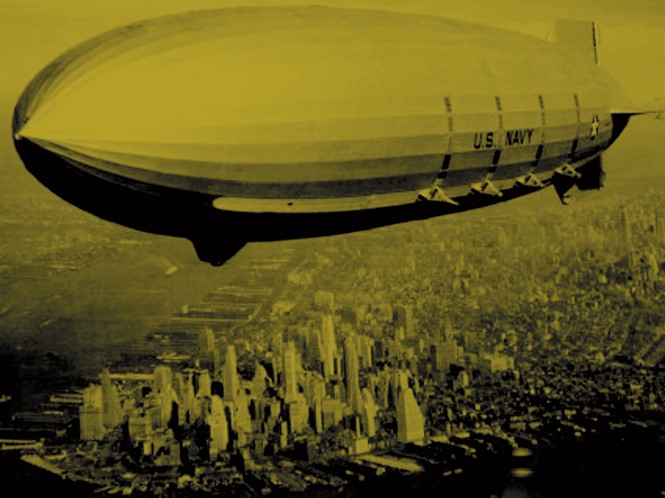Rewind: Zeppelins

In what has become a byword for disaster, the Hindenburg Zeppelin’s crash over New Jersey became world news and tolled the death knell for the technology’s proliferation. Could the collapse of the Zeppelin’s popularity and feasibility for air travel have been avoided?
David Ferreira, brand manager, City of Mississauga
Today, we take it as a given that fixed wing aircraft were theclear choice to become the dominant form of commercial air travel – yet, in the 1930’s that wasn’t the case.
The first airline, DELAG, was founded in 1909 using rigid airships. Zeppelins were the first aircraft to cross the Atlantic commercially, and had some advantages compared to the fixed-wing aircraft of the day. They were able to fly higher, farther and with heavier payloads.
On 6 May 1937, that all changed. The Hindenberg, the largest Zeppelin ever built, was attempting to land in Lakehurst, New Jersey at the end of its maiden voyage and caught fire. It quickly burst into flames killing all 13 passengers and 23 crew members.
Being its maiden voyage, crowds of interested observers had gathered at the landing site, including the media. This ensured the spectacular images of the crash were seen by millions of people in print and theatres around the world. It is debatable whether fixed wing aircraft of the day were safer than Zeppelins. However the images of the disaster galvanised public perception and commercial passenger travel on rigid airships ended almost overnight. Today, a media release and awareness campaign would have been launched immediately, reinforcing the safety of Zeppelins along with a public investigation to ensure a tragedy like it wouldn’t happen again.
It’s an almost 110 year-old lesson in crisis management.
Flavia Barbat, editor, Branding Magazine
As true as it is now, business transformation was key in the ’30s as well. And the Zeppelin is a great example. Instead of innovation, transformation and internal/external disruption, those leading the Zeppelin brand were overwhelmed by the increasing affinity and market share bestowed upon airplanes.
You could say that the cause of this overwhelmed behaviour was the previously-unimaginable growth of technology at the time, the sense that the world had moved on to the next big thing. But, what’s so different now? Are we not experiencing the same unprecedented boom in life-altering technological advancements? We are, indeed. And the most important thing that organisations must learn in a day and age such as this is that technology is not enough to succeed. Usability and features are important, they can be added or taken away, and they can even be the same ones as those of a competitor.
At the end of the day, it is your branding that will be your compass – your technology merely your ship. To reach your destination, you must pair your ship with knowledge, patience, agility, and purpose. Those are the traits that will be able to accurately read your compass, and tell you which direction (or next step) is right and which one will lead your brand straight into a storm. What we see now with the reintroduction of the Zeppelin, and reconstituting of its strategy and potential, is the exact retinkering the brand needed then – and that the brand needs now. Its leaders thinking beyond the limitations of their ship and more towards its repositioning in modern society.
Ryan Wheaton, director, Industry
Over the years, tens of thousands of passengers flew on over 2,000 Zeppelin flights without a scratch. Even the ill-fated landing at Lakehurst New Jersey in 1937 miraculously produced 62 survivors. Statistically, Zeppelins were safe. Zeppelins fell victim to shifting public opinion. There was also a back catalogue of disasters, previously brushed aside. But the shift in opinion was not just due to the safety concerns and bad PR.
The success of airships before 1937 had been based on a set of now outmoded benefits. They had been compared to ships – building a brand based on speed, stability and luxury. The modern world and wartime innovation however brought rapid advancement of airplane technology. That technology aimed for even greater speed and dependability. Compared to planes and Clipper flying ships, Zeppelins were slow and cumbersome.
For transatlantic travel, their time was over before the Hindenberg ever flew. No amount of brand management could change that. For the modern era though, there might be a future. Zeppelins could find a new niche positioning, perhaps drawing on two other key strengths – stability and a low flying height – to provide eco-friendly flying tours over natural beauty spots or in creating airborne police surveillance platforms.












